Medieval Torture Museum in St. Augustine, Florida
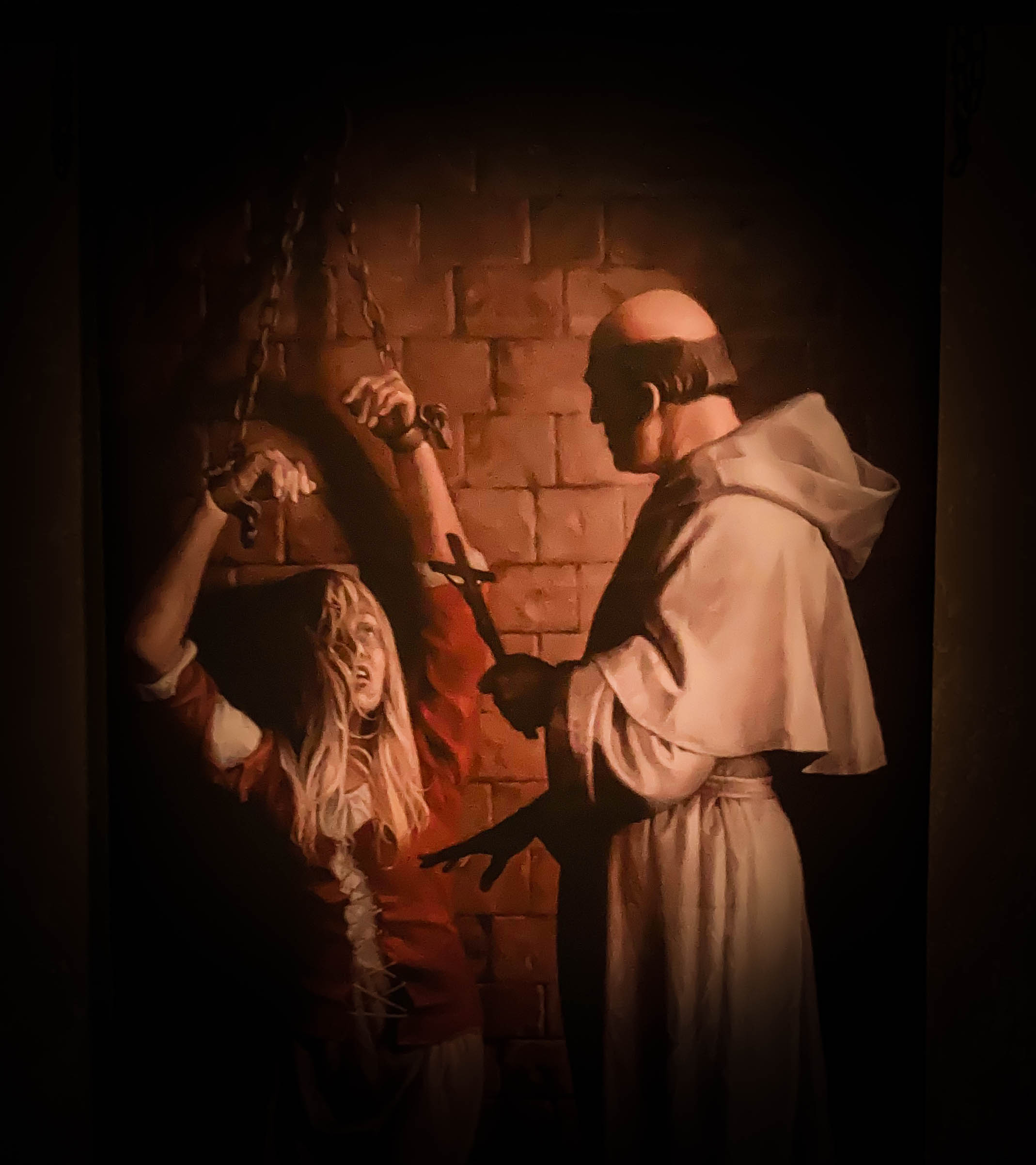
Governments have long used masks to control their subjects.
WARNING: The images that follow are disturbing.
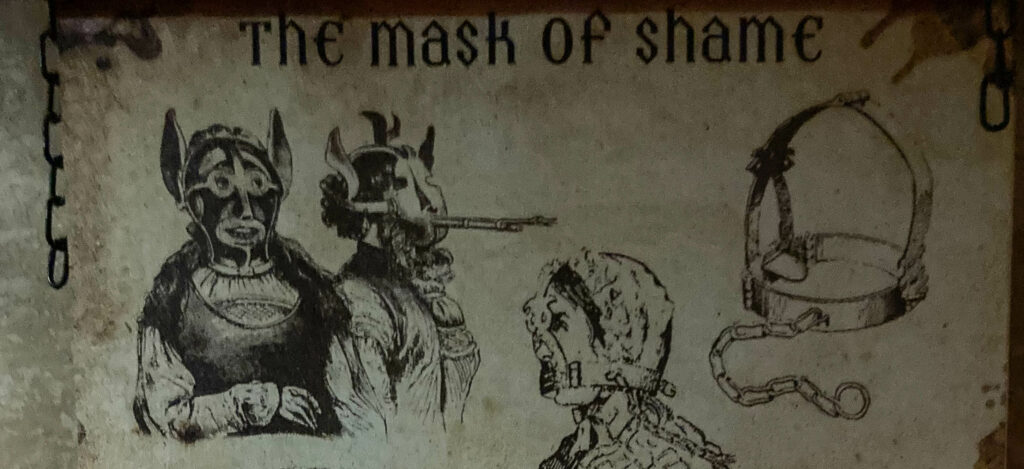
This post contains affiliate links. For more information, click here.
The Medieval Torture Museum in Saint Augustine, Florida, features an unsettling display of these devices, whose purpose was to subject the wearer public ridicule. They were typically used to punish “crimes” like gossip, gluttony, eavesdropping, and drunkenness.
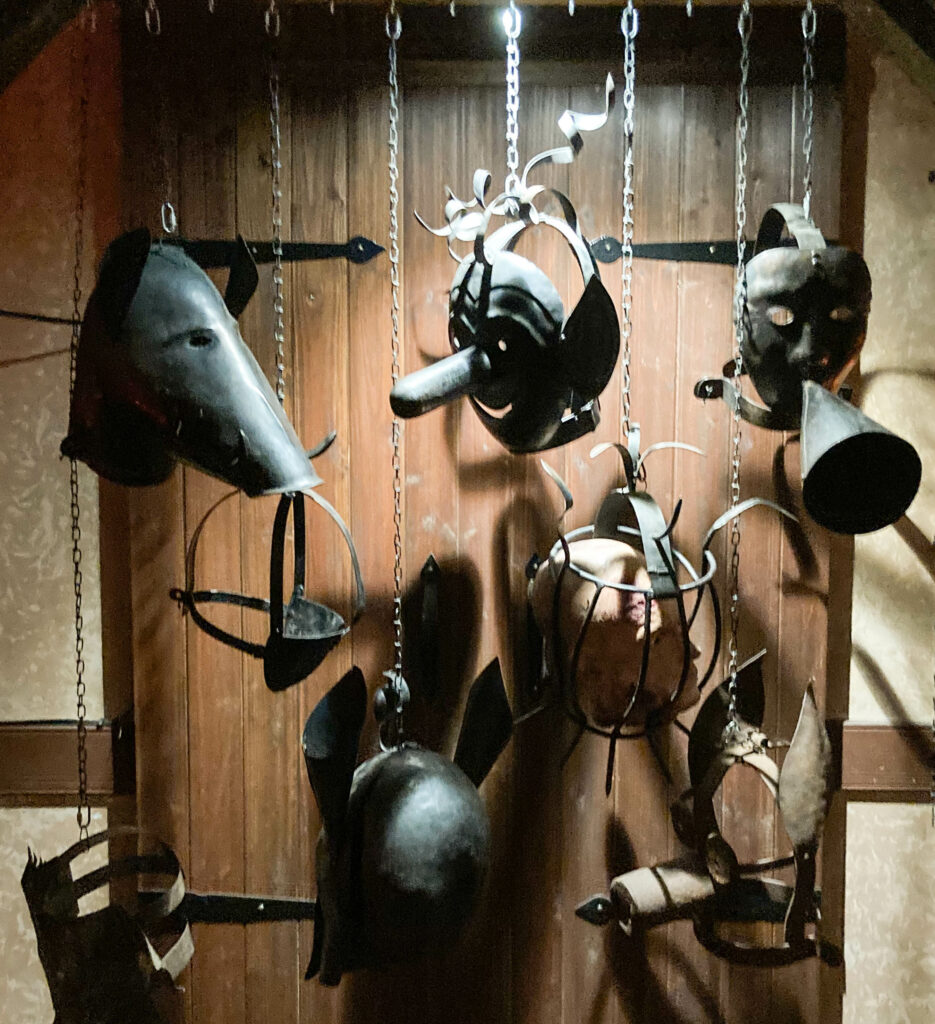
But masks are among the milder devices at the medieval Spanish city’s Museum, which provides a horrifying look at man’s inhumanity to his fellow man and woman, and highlights why America’s Bill of Rights includes protections from things like cruel and unusual punishment. The interior of the 4,000-sf Museum resembles a dungeon. Chains abound. Candles illuminate realistic mannequins being tormented with different methods. Pseudo-tapestries depicting torture hang on the walls. All in all, there are hundreds of implements and images on display.
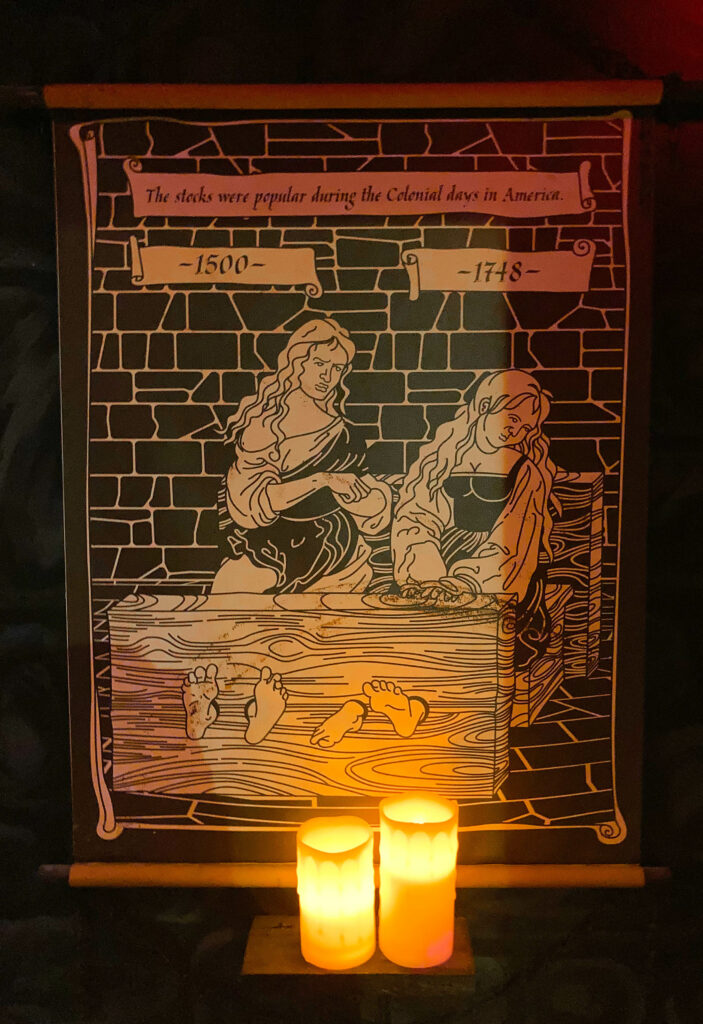
Neck traps were used to transport and hold prisoners from ancient times.
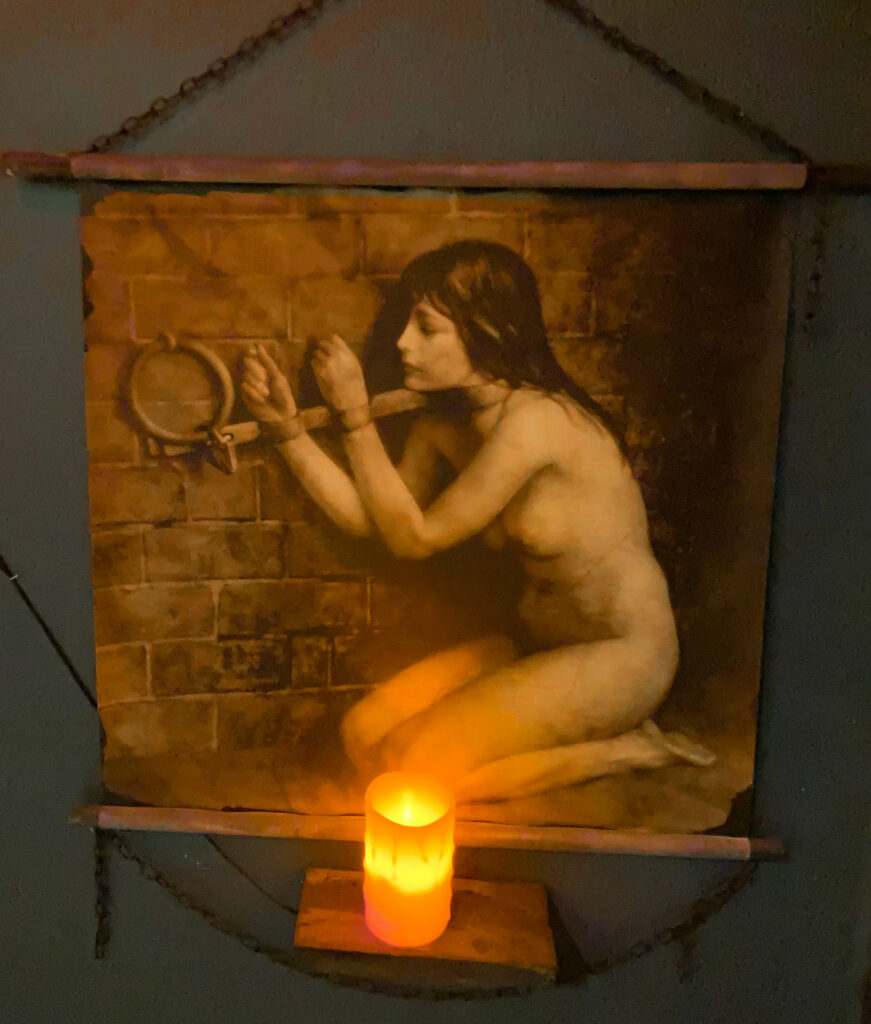
The pendulum swung lower and lower over a bound prisoner’s abdomen. It was often used to extract confessions, and was frequently successful as the blade reached the skin. It features in Edgar Allen Poe‘s “The Pit and the Pendulum”.
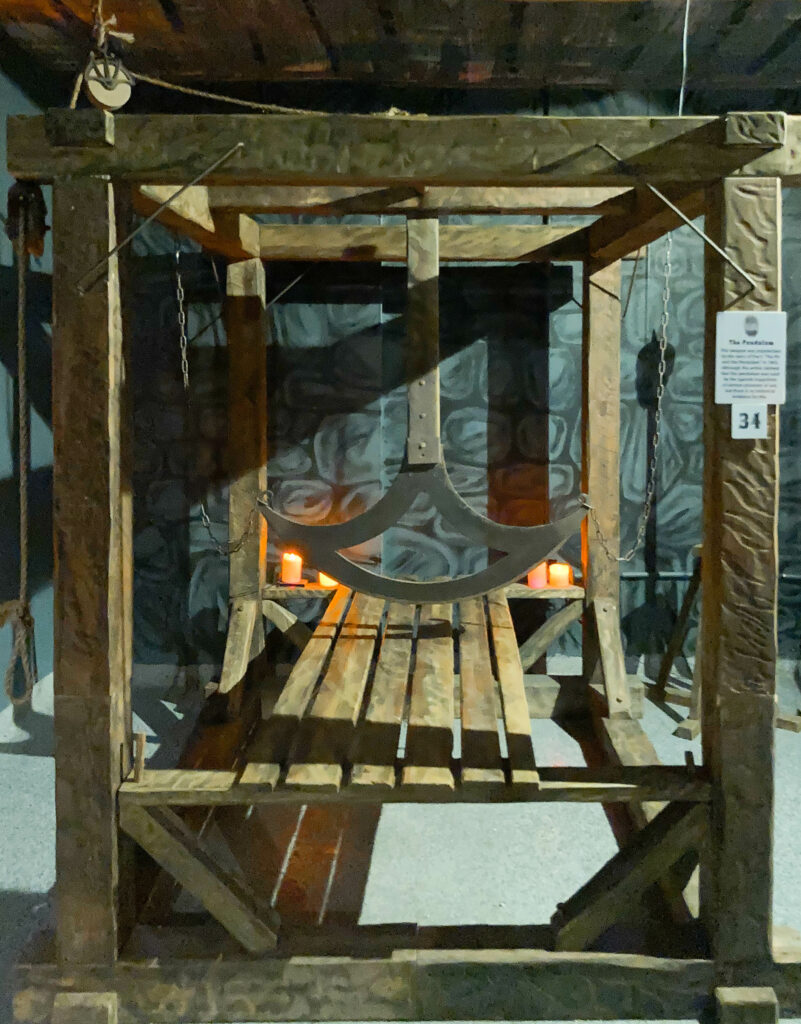
Those accused of heresy or witchcraft, usually women, rode the Spanish Horse–a sawhorse with a sharply pointed triangular center bar. If the victim were lucky, her legs would dangle free, unable to reach the floor; if she were unlikely, her ankles would be tied with weights.
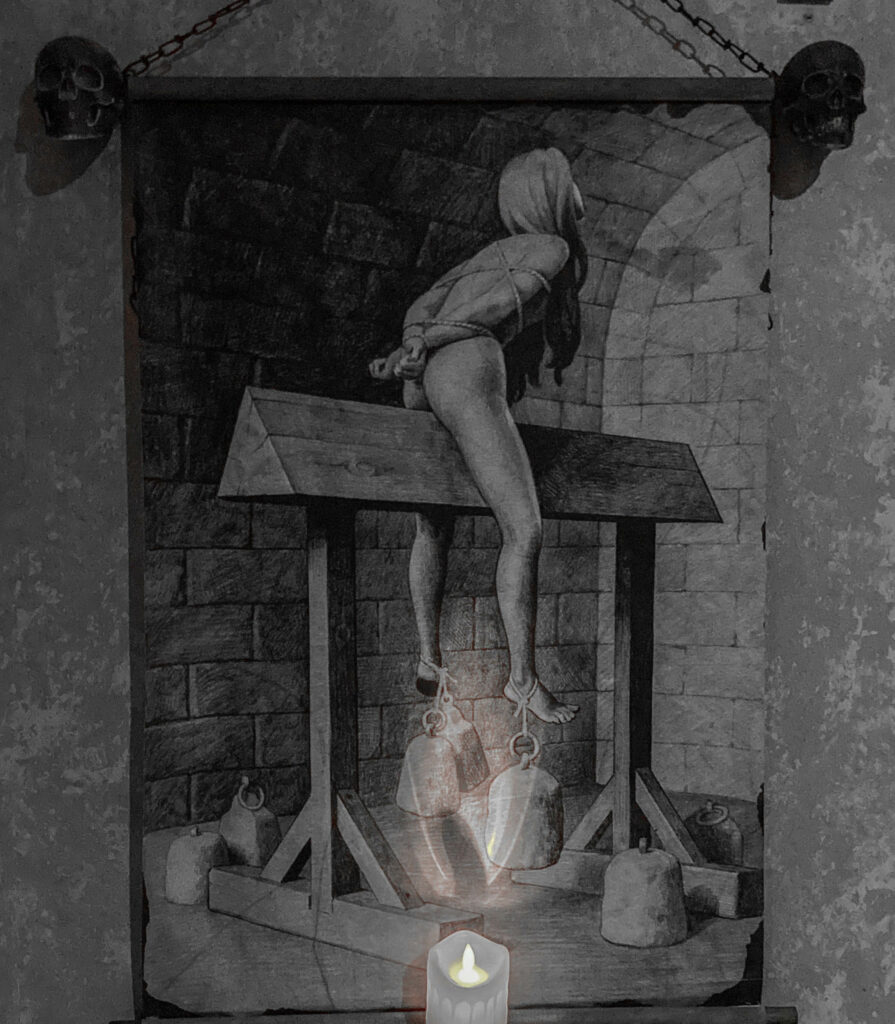
Burning at the stake dates back to the 8th-century beginning of the Inquisition. It was a common method of execution for those accused of apostasy or sorcery and for prisoners of war.
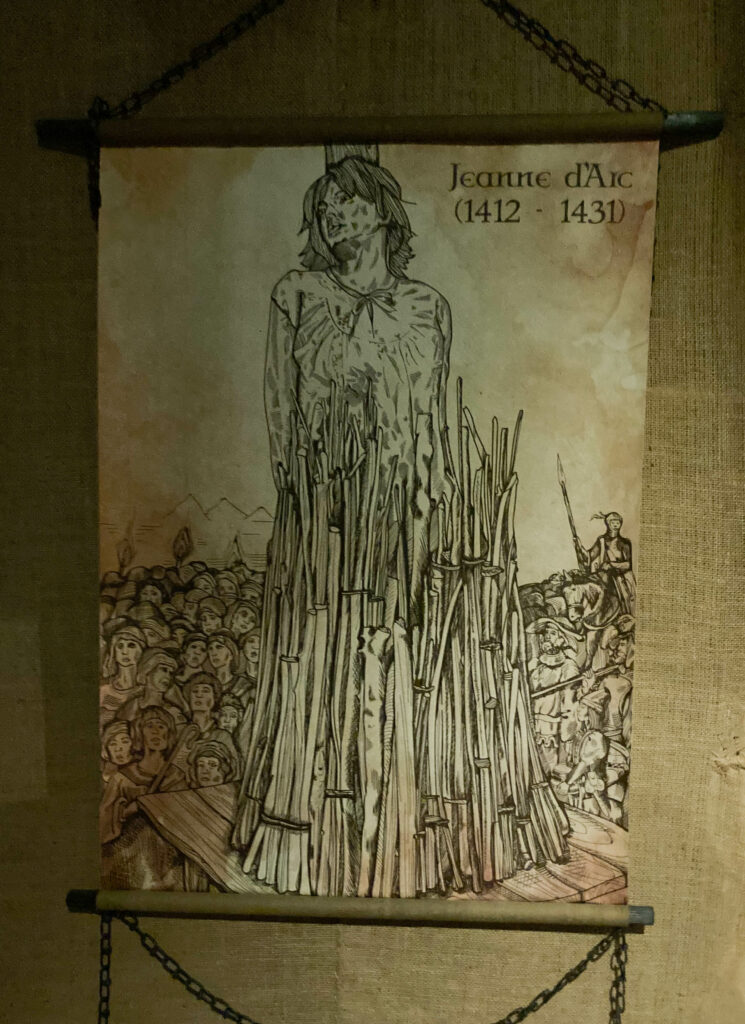
If I had to choose my most un-favorite form of punishment at the Museum, I think it would be the rat torture. The executioner bound the victim supine on a table and placed an upside-down bowl containing rats on his torso. Then he would light coals on top of the bowl. This caused the rats to gnaw through the victim’s flesh in an effort to escape the heat.
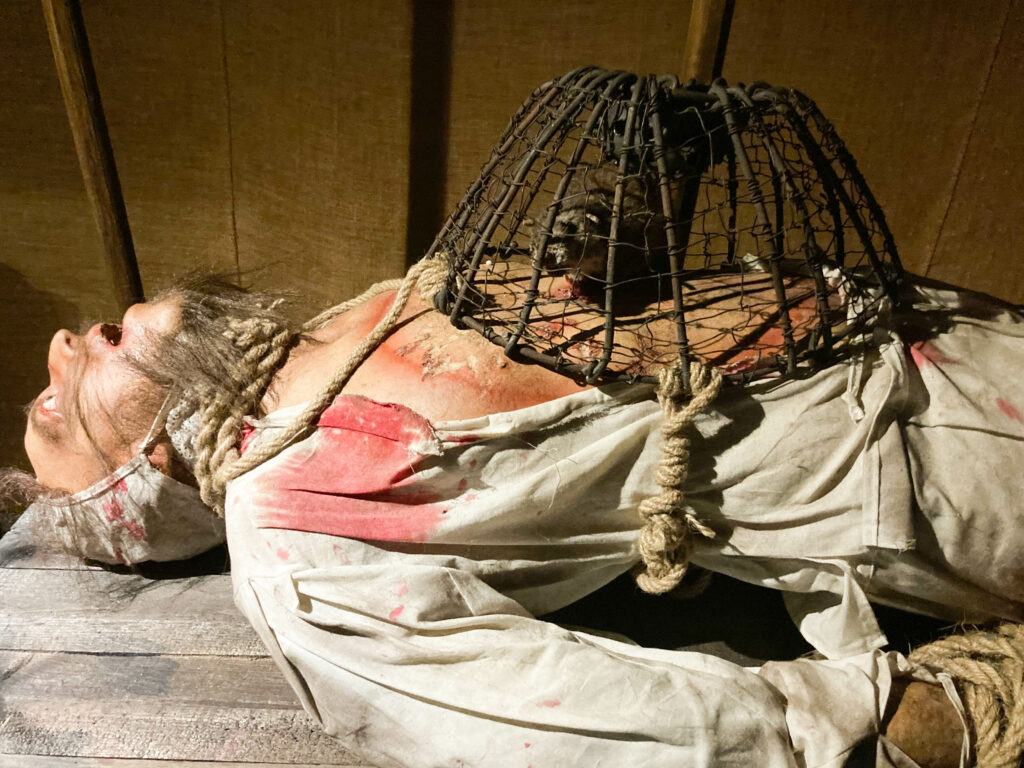
Masks were just the tip of the iceberg.
What to Know before You Go to the Medieval Torture Museum
The first thing to decide is whether you should go at all. Children absolutely should not go to this Museum. As
for sensitive or squeamish adults, well, I’m both, but I’m glad I went. The unusual Museum will intrigue anyone with an interest in history or human nature, and offers a cold but important look at how dangerous powerful governments can be, especially to women. If you think you can handle the gore, it’s worth visiting. If you don’t, that’s okay; it is not a Museum for everybody, and there’s plenty of beauty to explore elsewhere in St. Augustine.
The Medieval Torture Museum is located at 100 St. George Street, St. Augustine, Florida. Driving and parking are challenging; I recommend walking or using Lyft. Allow 45-90 minutes. There is a gift shop.
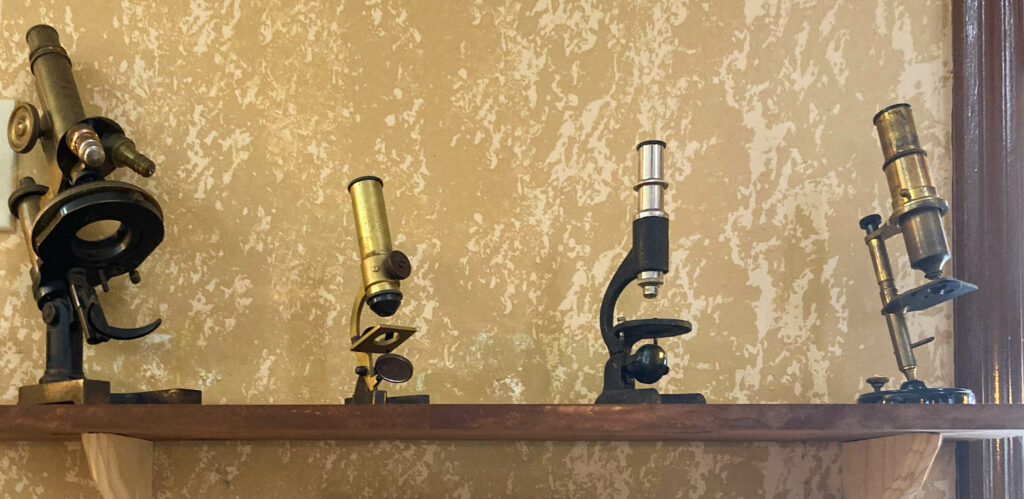
If you’ve had more than you can take of the macabre, the Micro Masterpieces Art Gallery is located right next to the
gift shop. There you can renew your spirits by viewing teeny-tiny works of art through microscopes.
To book a room at my hotel of choice in Saint Augustine, the historic Casa Monica, click here.

After my misspent youth as a wage worker, I’m having so much more fun as a blogger, helping other discerning travellers plan fun and fascinating journeys. Read more …
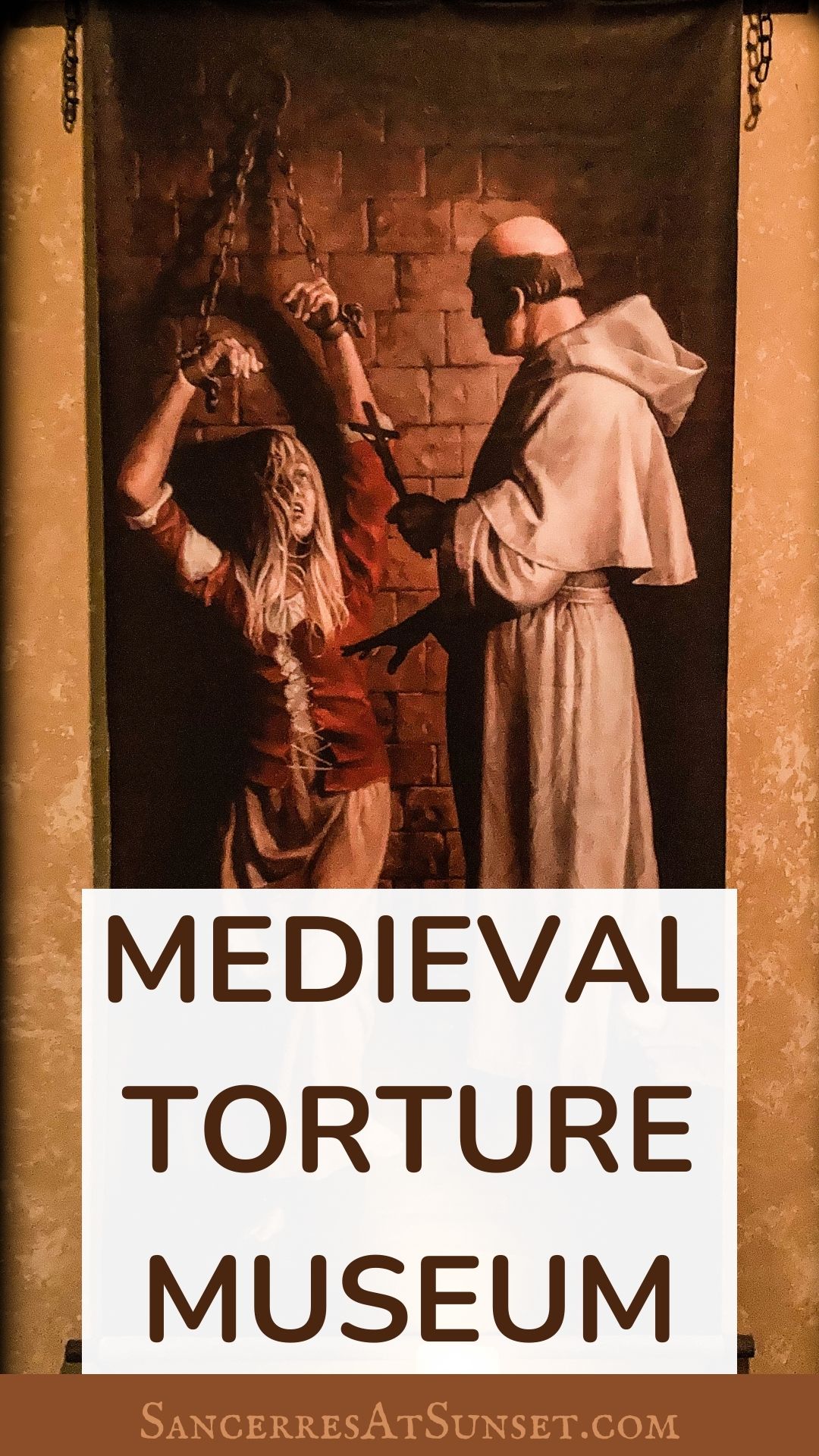


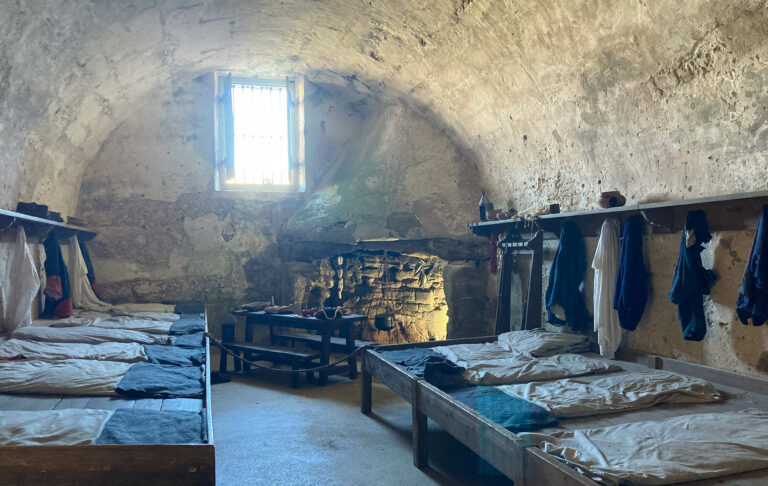
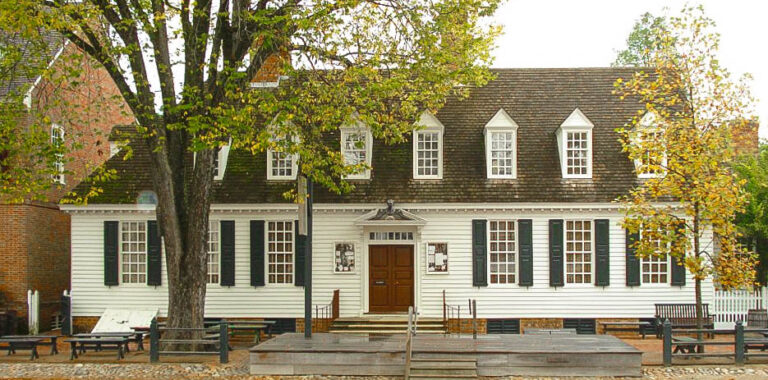




Locals hate y’all